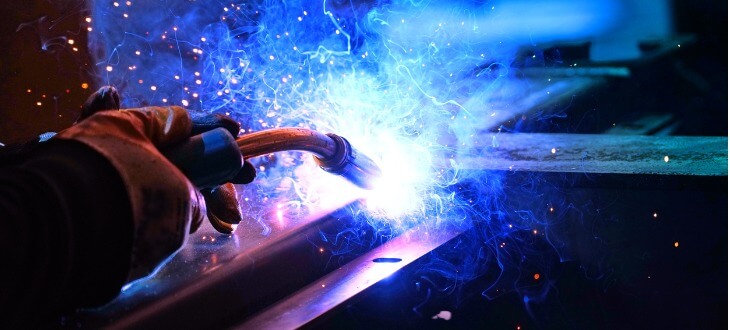Many people ask us about their metal needs, especially when it comes to welding their materials. A common question we get is, “can you weld stainless steel?”
This article explains what stainless steel is, if it’s hard to weld, what type of welding should be used, how to prepare to weld your stainless steel, and the essential tips and tricks for welding it.
What is Stainless Steel?
Stainless steel is a type of steel made from iron and chromium. The exact components of stainless steel may depend on many factors, such as the use of the steel. Stainless steel is also a corrosion-resistant element.
Is it Hard to Weld Stainless Steel?
It is more complex to weld stainless steel compared to carbon steel welding. This is because stainless steel retains heat, meaning it can warp when exposed to the high temperatures needed to weld. Additionally, it shows scratches and blemishes, so you need to be very careful when you weld stainless steel.
You need to know what kind of welding you want to do with your stainless steel. Austenitic welding may force the stainless steel to be concave or flat. Martensitic steel can crack if it’s not preheated correctly. The key to welding stainless steel is getting the right filler material. This needs to be a match to the original base materials grade to be successful.
What Type of Welding Should You Use?
This question can be complicated because it depends on your end goal. You should consider using metal arc welding (MIC), gas tungsten arc welding (GTAW), or stick welding. Keep in mind each type will have a different result.
To get the best outcome for your project, you will need to consider the welder’s skill level, the look of the final piece, and the thickness of the metal. But most importantly, you should keep in mind the cost and timing factors for your project.
Preparing to Weld Your Stainless Steel
The first thing you will need to do is to clean your workstation. Ensure it is clean from dust, oil, grease, water, and other elements that may impact your stainless steel. This will also ensure your stainless steel is cool enough to weld correctly.
Additionally, you need to have tools separate for stainless steel use. This is because once tools touch carbon steel, they will have carbon residue on them. That will then transfer to your stainless steel during your welding, causing it to rust eventually.
Tips for Welding Your Stainless Steel
Keep Your Heat to a Minimum
You need to keep your heat on the lower side when working with stainless steel. This is because when stainless steel is exposed to a lot of heat or high temperatures, it warps.
Hold Your Welding Gun at a 90-Degree Angle
You should always keep your welding gun at a 90-degree angle when you use it. This will better help you weld your stainless steel better.
Keep Your Work Area Clean
Keeping your work area clean will also help you keep your stainless steel clean. This is especially important so you don’t cross-contaminate your stainless steel with carbon residue. If you do, you are opening up your stainless steel to rusting.
Avoid Large Filters
A large filter diameter on your welding equipment will use more heat. Avoiding the use of large filters will keep the heat down and, in turn, not mess up your project.
Visit Tampa Steel & Supply for Quality Metal and All Your Metal Processing Services
Do you need help with woodworking or metalworking? The experienced professionals at Tampa Steel & Supply are here to help. We provide the highest quality of services to our customers.
Request a Quote Online
Or Call Tampa Steel & Supply at (813) 241-2801

